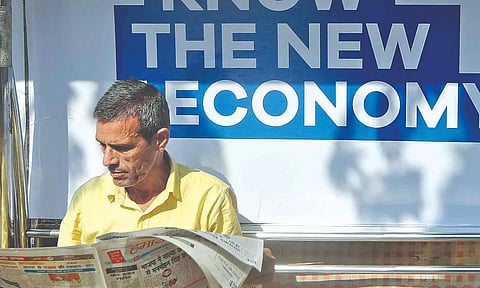

CHENNAI: Last week, the findings of the Household Consumption Expenditure Survey (HCES) for 2023 were released by the government. The report said less than 5% of Indians are expected to be below the poverty line, while extreme destitution has disappeared. Per BVR Subrahmanyam, the CEO of the Centre’s think tank NITI Aayog, the growth in India is broad based, with rural Indians’ incomes and spending rising quicker than their urban counterparts.
The report tells us that the urban rural consumption divide has narrowed to 71% in 2023, from a peak of 91% in 2004-05, which the government considers as a bellwether of declining inequality.
Data from the survey pegs the poverty rate in India to be closer to 5% or lesser, the government official emphasised. The report also highlighted shifts in rural and urban consumption, with the share of spending on food and cereals coming down. In 1999-2000, an urban household set aside nearly half of its income on food.
From 48.1% of the total household expenditure, the food spend has dropped to 39.7% in 2023. Spending on non-edible items – consumer durables, as well as spending on beverages and processed food, along with medical care and transportation have gone up during this period, while expenditure on cereals and pulses has tapered. The diversification of spending towards milk and fruits, which is growing, could be an indicator of a shift towards a more balanced consumption. It’s pertinent when you consider that India is a protein-deficient country.
The reduction of expenditure on cereals could be due to the introduction of government welfare schemes. Apart from the Centre’s Pradhan Mantri Garib Kalyan Yojana, many state governments provide free cereals under different schemes, which has prompted consumers to spend less on it. In urban pockets, the tendency to order food from outside has also tipped the scales on cereal spends. But, the report has also talked about an increased consumption of unhealthy items including paan, tobacco and other intoxicants. Curiously, spending on non-food items like education, clothing and footwear seemed to have taken a considerable hit.
It also appears that underserved rural households spend pretty much on the same lines as their underserved urban counterparts. One could credit the Centre’s policy initiatives for enhancing rural incomes as a contributor to this phenomenon. As a caveat, there is a difference of over 85% in spending for the highest 10% of households which implies a surge in income inequality right at the top. It also begs the question, whether higher rural inflation might be a cause for the higher expenditure in villages.
It is worth pointing out that the findings pertaining to consumption patterns of foods, could eventually lead to a recasting of the consumer price index (CPI), which measures retail inflation, on account of the spend-share of cereals and food dipping. The lower contribution of food to CPI inflation implies a historic overstatement of inflation, which could have implications for the Reserve Bank’s monetary policy. Stakeholders in the policy space are now asking if cereals make up such a small proportion of our consumption pie, does it make sense to reconfigure India’s food subsidy regime? And while we are at it, could this report also clear the decks for revising the base for key economic indicators, not just the CPI, but the GDP as well?